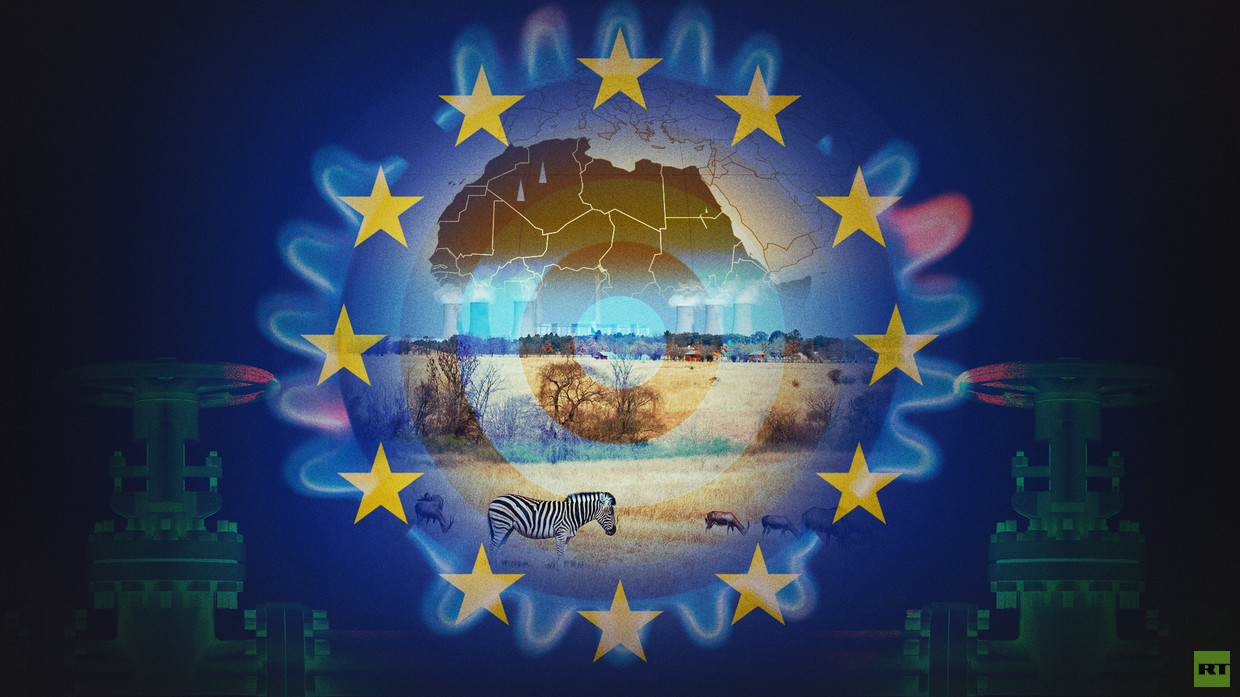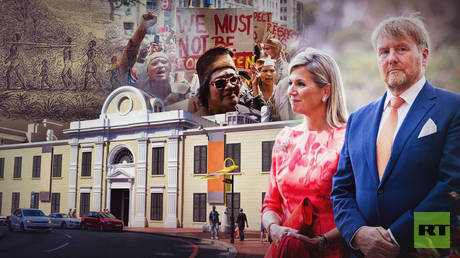The energy crisis in the European market continues. It has been caused by several factors, including accumulated structural imbalances in global energy markets, EU energy policy, the pandemic, and the armed conflict in Ukraine that began in February 2022 and led to a major decrease in the supplies of Russian gas.
In 2022, electricity generation in the EU decreased to 2,641 TWh (from 2,785 TWh). In the history of the bloc, these indicators dropped that much (140 TWh per year corresponds to the annual output in Pakistan or Kazakhstan) only twice: in 2009 due to the global financial crisis, and in 2020 due to the Covid-19 pandemic.
In 2023, electricity output decreased even more. The consumption of gas – a key energy source for Europe – is also decreasing. In 2022, gas consumption decreased by 13% to 343 billion cubic meters and continued to decline in the first half of 2023. Moreover, consumption is decreasing in the sectors of the economy that depend on it the most: power generation (-18%) and industrial production (-13%).
We should not assume that EU countries have been watching this decline with indifference. The European Council has made political commitments to reduce gas consumption by 15% from average levels in 2017-2022, before March 31, 2024. Also by next year, the EU plans to expand LNG import capacity by 50 billion cubic meters to 227 billion.
However, these ‘defensive’ measures demonstrate that the EU has not been able to smoothly replace Russian gas with other sources. Africa played a significant role in the Europe's search for alternative energy sources. In the spring of 2022, high-ranking European delegations visited African countries on almost a weekly basis in search of gas. However, even then it was clear that they would not be able to squeeze much gas out of Africa.
The chronological outline of failure
Things turned out to be even worse than expected. According to the HSE Center for African Studies, gas exports from Africa to the EU amounted to 72 billion cubic meters in 2022 – which means they decreased by about 2 billion cubic meters compared to the previous year. Algeria (-5 billion cubic meters), Nigeria (-0.7 billion) and Libya (-0.5 billion) were among the countries that cut gas exports the most.
Most African gas exporters (or rather, Western operators of LNG plants that control LNG marketing) have indeed transferred extra volumes to the EU, which they exported to Asia. For example, Angola supplied 56% of its LNG to the EU (compared to 17% in 2021), Egypt – 46% (compared to 13%), Cameroon – 61% (compared to 0%), and Equatorial Guinea – 30% (compared to 26%). Moreover, in 2022 a new African country, Mozambique, entered the global LNG markets. In December, the first batch of LNG produced by the British oil and gas company BP at the Coral Sul Floating LNG plant (FLNG) off the coast of Mozambique arrived in Spain. In total, Mozambique exported 0.4 million tons of LNG in 2022. The combined efforts made it possible to increase LNG exports from Africa to the EU by 2.7 million tons (equivalent to 3.8 billion cubic meters), amounting to a total of 19 million tons.
However, with the exception of Egypt, these countries are not Africa’s main LNG exporters. Meanwhile, Algeria and Nigeria, which combined account for 60% of African LNG exports, have decreased gas exports to Europe.
These two countries are Africa’s largest exporters of gas, and in recent years, they have met with a number of problems. Algeria and Nigeria have a lot in common since gas exports play an important role in their economies and domestic markets. In Algeria, gas-fired power plants generate up to 98% of all electricity, and in Nigeria – up to 80%. But each country has its own problems and each takes a different approach to solving them.
The success of Algeria's independent economy
Unlike Nigeria, Algeria is taking actionable steps to develop its domestic gas market. As a result of a consistent policy of promoting gas transportation infrastructure, power plants, household gasification, and subsidies, gas consumption in Algeria has increased by 60% over ten years and amounts to about 45 billion cubic meters annually – the same level as France, and slightly more than in Australia.
In Algeria, the price of gas on the domestic market is 40 times cheaper than in Europe (the domestic price is about $15 per 1,000 cubic meters versus $600 on the EU spot market). This ensures the country's energy security, and in the future will increase the competitiveness of the local industry. By 2030, consumption may reach 70 billion cubic meters. Due to growing domestic consumption, however, Algeria’s proven gas reserves are gradually being exhausted – a problem that is exacerbated by the need to continue exporting gas, which is encouraged by record world market prices.
Algeria is facing increasing pressure from potential European consumers and Western corporations (e.g., Eni and Total) which are lobbying for systemic solutions aimed at increasing gas exports. Examples include the development of renewable energy sources, the refusal to build gas chemical enterprises, etc. So far, Algeria has withstood the temptation to increase exports to the detriment of its domestic market and maintains them at a level of 40-45 billion cubic meters.
There is still a noticeable downward trend, however, and every year Algeria exports pipeline gas to fewer countries. In 2021-2022, it stopped exports to Morocco and Portugal and exports to Spain are currently declining. Against this background, Italy is becoming Europe’s main hub for Algerian gas. In 2022, exports to Italy reached a ten-year high, amounting to 22.6 billion cubic meters. This was facilitated by a general reduction in LNG exports, and a decrease in exports to Spain.
Nigeria's post-colonial problems
In Nigeria, however, gas consumption hasn’t surpassed 11-13 billion cubic meters in the past eight years. This is comparable to the annual gas consumption in Singapore – a country where the population is 30 times less than in Nigeria, and which covers an area smaller than the city of Lagos.
The nation’s oil and gas industry is subject to regulations which encourage the export of raw materials and energy resources even if the demands of the domestic market are not met. International corporations often play a major part in forming postcolonial legislative frameworks which artificially limit the volume of energy resources entering Africa’s domestic markets in order to supply their own production chains outside of Africa with raw materials.
For example, Shell exports gas at a price that is two times lower than the price at which it sells gas domestically in Nigeria. The company uses any pretext to focus its transport capacity on exports without making significant efforts to expand supplies to the domestic market.
These export-oriented policies aimed at maximizing profits and marginalizing the domestic market and infrastructure, while ignoring the needs of local communities and environmental requirements, cause many problems in Nigeria. Presently, no one is even considering developing the domestic market, since the main concern is to maintain export volumes.
Since October 2022, NLNG Limited – the operator of the Nigeria LNG plant owned by Total, Eni, and Shell – has declared ‘force majeure’ due to the “flooding” of its pipelines and gas fields. Other problems have come up as well, such as the exhaustion of resources (caused by delays in putting the new gas fields into operation) and deteriorating infrastructure. As a result, the plant, which has a 22.5 million ton production capacity, has produced only 14.2 million tons of LNG compared with 16 million tons in 2021.
In 2019, NLNG shareholders made the final investment decision on the construction of the plant’s seventh processing facility, which will bring the production capacity to 30 million tons per year. Consequently, the situation has become even more absurd. The report by the HSE Center for African Studies titled “NLNG T7: a Way to Euthanize the Nigerian Power Sector,” shows that Western corporations will surely find gas for the seventh processing unit (10-11 billion cubic meters per year) but one may forget about the development of the domestic gas market in Nigeria.
Gas-fired power plants in the African country will continue to run out of gas, the duration and frequency of blackouts will increase, people will continue spending more money on buying diesel generators and will rely on other solutions (such as LPG). In such conditions, industrial development will stagnate because the construction of any industrial enterprise in Nigeria (even a mill, not to mention an oil refinery) requires additional costs for ensuring an uninterrupted supply of electricity.
When is the next round?
In 2022, the Europeans’ charm offensive failed, but it is obvious that the EU will continue attempts to gain access to additional volumes of African gas. Despite the expected commissioning of small LNG plants in Senegal and possibly in the Republic of Congo, European delegations will continue to pay regular visits to Algeria, Nigeria, and Egypt.
European transnational companies, institutions, and international development assistance agencies will continue systemic work, to include draft laws, white-paper recommendations, analytical reports, and personnel training, aimed at promoting their own energy agenda. It may be formulated this way: we will import your gas, and in return, we will build renewable energy power plants for you on credit. For example, on November 21, 2023, companies from Germany and Nigeria signed two memoranda of understanding (MoU). One concerns the export of gas from Nigeria to Germany, and the other the construction of renewable energy plants in Nigeria by German companies.
In such circumstances, any industrial development is out of the question. The future of Africa and its industry depends on the ability of the continent's governments to channel their resources into their own markets. Algeria's experience proves that this strategy is possible.


